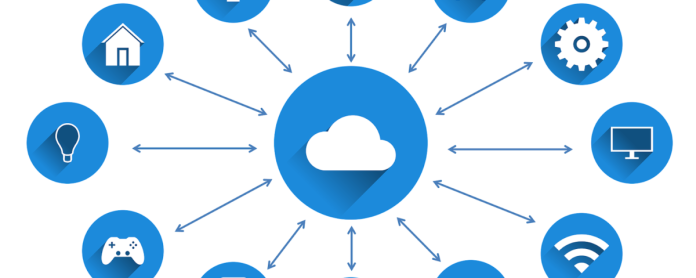
Cloud computing has become a crucial part of our lives. You are probably making use of cloud services right now, with or without realizing it. If you use an online service to send emails, watch movies, listen to music, play games, store pictures, among a million other things that you do online, cloud computing services are making it all possible behind the scenes.
Almost all industries that heavily rely on storing data online likely use cloud services. The usage of the cloud is only going to increase dramatically with the rapid digitalization of the world, and it is important to understand as much as we can about it.
The words “cloud computing” and “cloud-native” are often used interchangeably, but they are not the same. Yes, they have only minor differences, but let’s first look at how different they are to move on to analyzing some cloud-native trends in detail.
Cloud Computing vs. Cloud-Native
Cloud computing, often referred to as “the Cloud,” is the on-demand delivery of hardware and servers for storage, databases, and all kinds of related application services possible via the internet. These are usually delivered by cloud computing service platforms like Google Cloud or Microsoft Azure, to name a few.
Cloud-Native, on the other hand, can be understood as a means of architecture for assembling all of the above cloud-based components optimized for a particular cloud environment.
In other words, cloud-native can be referred to as a service package comprising cloud-based processing and cloud services bundled together in expandable increments. Cloud computing is the servers, and cloud-native, services. Now that that is out of the way, let us move on to some cloud-native trends.
Cloud-Native makes multi-cloud a dream come true
Multi-cloud enables organizations to combine cloud services from a variety of vendors. It allows you to select the cloud computing services that suit your needs and budget and prevents hassles caused by vendor lock-ins.
Another added advantage that comes with a multi-cloud strategy is that organizations can have a mix of public, private, and hybrid cloud resources, thereby increasing the efficiency with which cloud computing services function.
Multi-cloud is made possible by cloud-native technologies and is best supported by cloud-native applications like Kubernetes (an open-source container-orchestration system to automate computer application deployment, scaling, and management).
Kubernetes enables organizations to manage applications and workload through cloud-native applications regardless of the application and application-host vendors.
Kubernetes is highly popular but extremely complex to maintain and upgrade. To combat this, many cloud services that deploy multi-cloud systems are being developed. Multi-cloud is here to stay and is going to be highly popular in the near future.
Automating configuration with the help of GitOps
Containerized workloads are gaining popularity, and a new way of managing toolchains, environments, and applications is becoming the need of the hour.
Teams are beginning to manage their cloud infrastructures the same way they manage application code, with GitOps, a Git-based process of continuous deployment of code and configuration.
Operators rely on a Git repository to propagate the configuration of Kubernetes clusters. The rise of multi-clusters and multi-cloud has made configuration difficult, and GitOps is the perfect solution that automates the entire process.
Implementation of SRE
Google has developed a method called Site Reliability Engineering (SRE), which uses software engineering practices to manage operations in production systems. Just like GitOps, SRE enables automation and adapts well to cloud nativity.
Many teams are incorporating SRE in their cloud services, but not all are doing so successfully.
This trend is only going to increase in momentum and become crucial for faster cloud-native operations that are also going to increase the overall usage of cloud computing services worldwide.
Cloud nativity in IoT
Although cloud-native technologies started with data centers, they are increasingly moving towards edge devices.
The Internet of Things (IoT) and 5G momentums are on the rise, and the cloud-native movement is going to be highly present in these industries.
This would speed up response times and improve the quality of the IoT services provided.
Incorporating edge devices into networks would become easier, thus making edge technologies more secure and reliable.
Cloud-native and ML go hand in hand
Cloud-native applications in the Machine learning industry have the potential to open some new technological doors.
This collaboration of two industries can automate many tasks carried out by data scientists and speed up the development of Machine Learning in general.
Facilitating the integration of ML processes into cloud computing services can speed up the training and development of various ML algorithms.
This trend is only going to rise as both cloud nativity and machine learning is yet to be in their primes.
Final Word
Cloud-native apps are built for cloud computing services and have seen a massive upsurge in the past few years. With the pandemic looming over our heads, this is only going to expedite the process further.
Cuelogic focuses on world-class software engineering by building Cloud Native & Data-Driven applications for SMEs to Large Enterprises.
We are a technology-driven agile organization focusing on building and managing software products using cutting technology to leverage scalability and cost advantages.
Cuelogic specializes in Product Development, UX Consulting, Application Development, Application Modernization, Quality Assurance Services, cloud services, Cloud migration, Cloud migration, cloud optimization, cloud computing services, DevOps Services, IoT App development services, Data & Machine learning services, AI consulting services & cybersecurity solution








